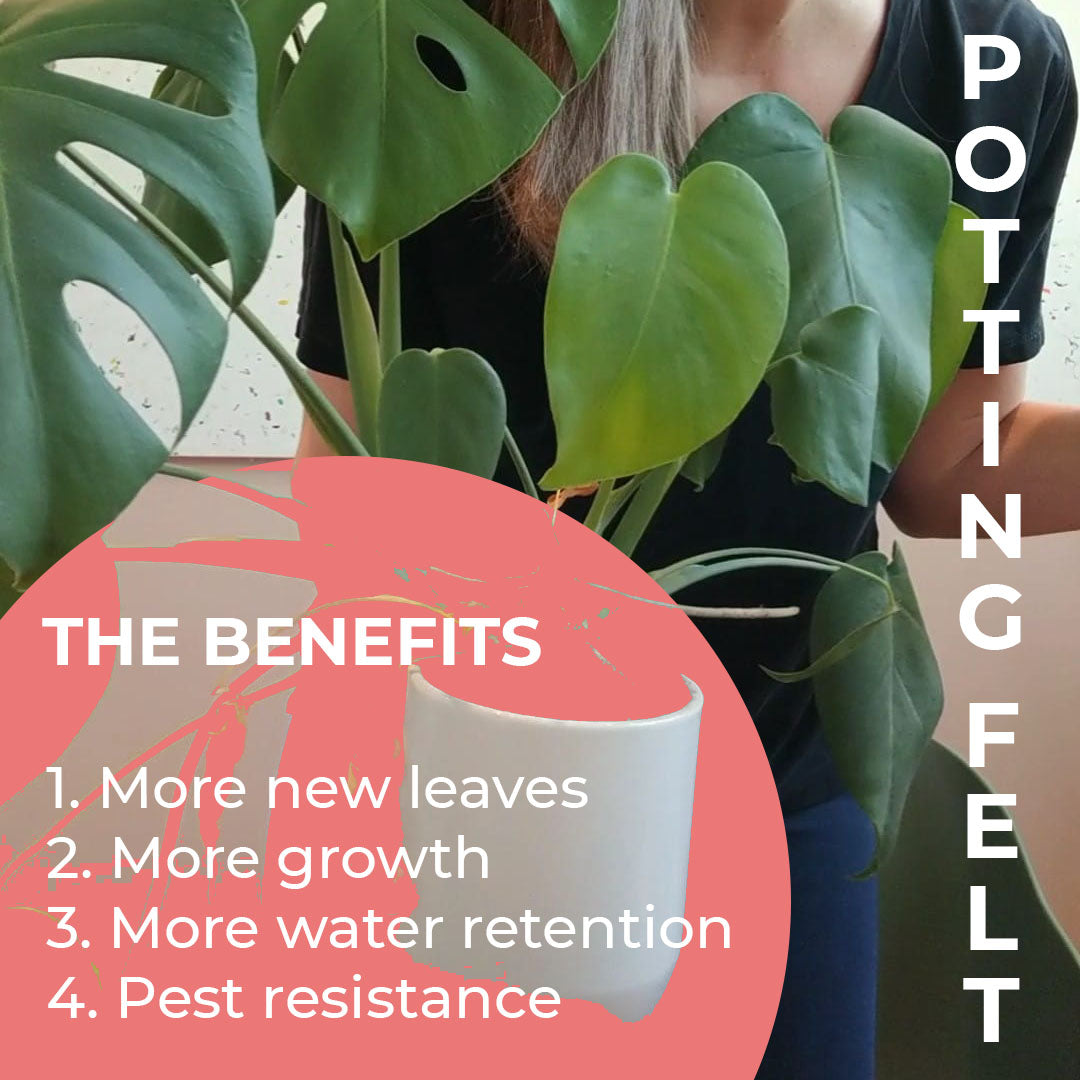
New Study Reveals 4 Benefits to Adding Cut Human Hair to Your Houseplants
New evidence reveals how hair can boost the growth of potted plants! You can read the full report here.
Green Salon Collective is always exploring new and improved circular solutions for all salon waste streams. We’ve thought for a long time that hair in our house plants was a good thing. We talked a lot about it on social media and people loved learning about it. But we are a brand that believes it is important to back up our claims and so we investigated this first hand. The question we set out to answer was:
Does hair help potted plants to grow better?
We were pretty sure it does but we’ll be the first to admit how genuinely surprised we were to see such massive differences between plants with and without hair. Spoiler alert: hair is good! To learn exactly how we set up this experiment–and how you can set up your own–we wrote a handy blog article which can be found here.
Now onto the results! (and photos!)


The bottom line is that the potted plants with hair grew better than those with no hair. Plants with hair at both the top and bottom did the very best in terms of new leaves and growth. They grew 27% bigger and 107% more leaves than the average plant. In fact, compared to plants with no hair, they grew 87% bigger and 350% more leaves.
If you love numbers (and evidence!), you can see our final data set in our official report (link) but below you can see a comparison of the plants after 308 days and 1.4L of water! More graphs can be found in the same report, if that’s your thing!
We found that given the same amount of water, sunlight and time, plants with hair at the top and bottom grew the most leaves compared to those with less or no hair. All the plants gained new leaves throughout the experiment, but many died along the way and, rather randomly, an equal number of leaves were born as died in the pots with no hair, resulting in net zero new leaves after 308 days.
We also saw how plants with hair at the top and bottom did almost equally as well as those without hair did poorly. The graph below explains it better than I just did. Plants with hair only at the top or bottom seem to perform only slightly better or worse than the average. The only exception is that plants with hair at the bottom almost always performed better than those with hair at the top all through the experiment. We believe this may be because the hair was useful for keeping water longer where it could be soaked up by the roots.


We think this because when watering the plants on Day 73, we noticed that plant pots without hair at the bottom (i.e. plants with no hair or hair at the top only) were more likely to spill over directly after watering (see photo below). This trend continued throughout the entire rest of the experiment and we believe it is because the hair helped to absorb some of the water. This would be a welcome finding for those of us who find watering plants to be a chore on a busy day!

The first potted plant to appear poorly was O (pictured above), one without hair, at 94 days. On day 114, bugs appeared. We decided to not treat the plants so we could see whether the presence or absence of hair had an effect on plant health after an infestation. First sightings were on plants G, H and O, all plants without hair.
After 308 days, the plant with the most growth in terms of width of the largest leaf was M (hair at the bottom only), followed by E (hair at the bottom only) and I (hair at the top and bottom). The least growth by width was P (no hair), followed by C (hair at the top only) and O (no hair).
The plants with the most new leaves after 308 days were A and I (both with hair at the top and bottom) followed by M (hair at the bottom only. The plants with the fewest new leaves were H (no hair), followed by G and K (no hair and hair at the top only, respectively). You can see all this lovely data in the report!
The numbers don’t lie
Overall, the plants with hair at the top and bottom grew wider and more leaves than those with less or no hair. Not only that, the plants with no or less hair appeared much more poorly than those with hair at the top and bottom.

Though there was some variation within the different groups of plants, the averages reveal that the presence or absence of hair directly influenced growth. Moreover, the differences in some instances were significant, especially for plants with hair at the top and bottom compared with no hair.
Our monstera plants really went through the wringer
We were pretty tough on our plants. We kept a watering schedule that was probably not sufficient to encourage rapid growth of these types of plants. It would be interesting to see how hair influences these plants with more water and better care. Also it would be interesting to see whether we could achieve the same results with different types of plants, particularly ones that are not as nitrogen-loving.
Moral of the story: Hair is good.
(Also, Science is great.)
Special thanks to Ocean Plastic Pots for supporting this experiment with a donation of eight pots. Special thanks also to Stephanie Hodgson, our Head Nerd, for carrying out the experiment and documenting it all for the world to see!
Written by Stephanie Hodgson


